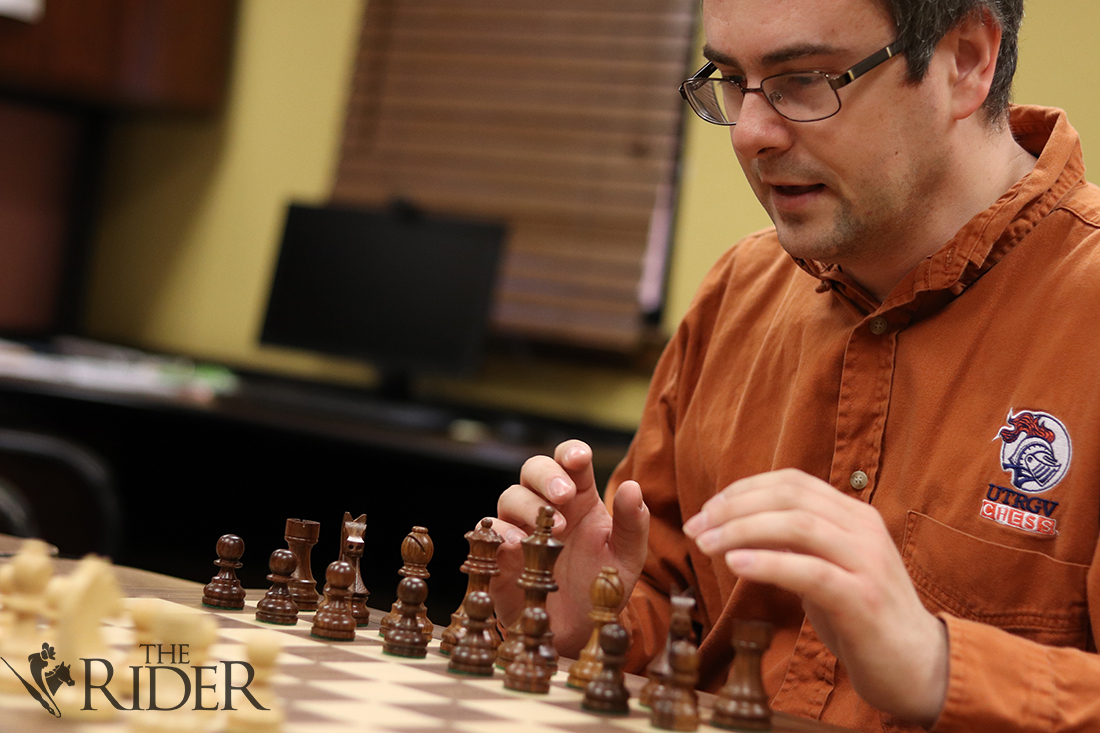
In the previous articles, The Rider informed readers about the different chess pieces and how they move, how to promote and castle, as well as how to begin a game.
For this issue, Bartek Macieja, UTRGV chess coach and Grandmaster, showed us how to end the game.
“Perhaps, we can cover some end games because middle games are something that connect ending with opening,” Macieja said. “We should know how to start. We should know how to end.”
An end game is a situation where the number of pieces left on the board is small, around three or four, he said. Also, he said the queen is the most powerful and almost every chess set comes with an additional piece.
“Basic end games are end games with three pieces, so [it’s] when two kings are left and an additional piece for one of the sides,” he said. “If the piece is a queen or it is a rook, then the strongest side can win, but if there is a knight or a bishop, then it is impossible to win the game.”
The easiest way to checkmate is to always do it close to the corners, with the queen and the king close to each other.
“The most basic end game is with the queen and the king,” Macieja said. “There’s a very nice algorithm that always works. So the algorithm is to make a move, get closer to the king of the opponent with the queen to put it one move of the knight from the king of the opponent. If he goes diagonal in that direction, we do the same. He goes diagonal to the other direction, we go diagonal in that direction. He moves back, we do the same.”
The coach said to always keep the distance one-knight move within each other.
“With this algorithm, we can push the king towards the corner and we can force the king of the opponent’s to be close to the corner,” Macieja said. “Once the king goes to the corner, this is the moment where we have to change our plan, because if we follow our pattern, we will stalemate the king of the opponent and it will be a draw because he doesn’t have any legal moves.”
The next step would be to put the king closer to the opponent’s king to checkmate it while having the queen attacking the king.
“What we can do is bring our king because we can’t give a checkmate just with our queen,” he said. “We need the two pieces together. So we bring our king closer and once we are very close to the king, we can checkmate the opponent. So the queen is attacking the king, is a check, and then the queen is protected by the king, so the opponent cannot catch the queen and that is a checkmate.”





